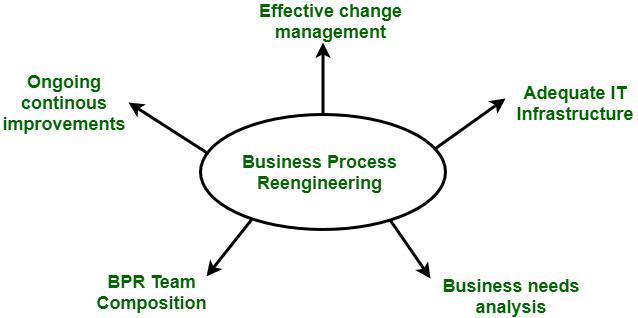
Stakeholders are groups of people who support an organization. In 1963, a memo from the Stanford Research Institute used the term for the first time. R. Edward Freeman was the first to develop the stakeholder model in 1980. The valuable contribution of stakeholder is a key component to the success of an organisation.
Internal stakeholders
The people and teams that are internal stakeholders have a stake in the success of an organization. These individuals and groups can be affected by management decisions. If the organization fails they could lose their jobs, but they might get bonuses or other benefits if it succeeds. These individuals and groups should be kept in the loop about any changes that may impact their lives or the lives of their loved ones.

Stakeholders can have different levels of power, influence, or importance. Stakeholders' influence depends on how important they are to an organization. The importance of a stakeholder is its ability to influence a project's outcome. Stakeholders with greater importance are given a higher priority in an organization than those with less importance.
Primary stakeholders
A primary stakeholder is anyone who has a financial interest in the success of your business. They depend upon your company to provide income for them and ensure their financial security. Their investments and actions directly affect the efficiency of the organization. They are therefore considered the most important stakeholders. Consider the following criteria when identifying your primary stakeholders.
A primary stakeholder is anyone who has an interest in the success of a business and directly influences its decisions. This can be either in a positive way or a negative one. This includes employees, customers as well suppliers and vendors. Secondary stakeholders, on the other hand have no direct stake and may have limited or no influence over a business's decisions.
Secondary stakeholders
Secondary stakeholders are people or organizations that have an indirect investment in a company, but have the potential to have a direct impact on how it operates. These include competitors, labor organizations, government agencies, or pressure groups. Their actions may have a significant impact on the company’s reputation as well as its future. If secondary stakeholders have significant influence, they may be considered primary stakeholders.

Secondary stakeholders, such local residents, are often not obvious but still have an impact. These stakeholders will likely require additional effort to conform to local regulations. They may not have an interest in the success or failure of a company but they could have enough influence to affect the company's decisions.
FAQ
How does Six Sigma function?
Six Sigma uses statistical analyses to locate problems, measure them, analyze root cause, fix problems and learn from the experience.
The first step is to identify the problem.
The data is then analyzed and collected to identify trends.
Then corrective actions are taken to solve the problem.
Finally, the data are reanalyzed in order to determine if it has been resolved.
This cycle will continue until the problem is solved.
What are some common mistakes managers make when managing people?
Sometimes, managers make their job more difficult than it is.
They might not give enough support and delegate the right responsibilities to their staff.
A majority of managers lack the communication skills needed to motivate their team and lead them.
Managers set unrealistic expectations and make it difficult for their team.
Managers may choose to solve every problem all by themselves, instead of delegating to others.
What are the steps that management takes to reach a decision?
Managers face complex and multifaceted decision-making challenges. It involves many factors, such as analysis and strategy, planning, execution, measurement, evaluation, feedback etc.
Management of people requires that you remember that they are just as human as you are, and can make mistakes. You are always capable of improving yourself, and there's always room for improvement.
In this video, we explain what the decision-making process looks like in Management. We'll discuss the different types and reasons they are important. Managers should also know how to navigate them. These topics are covered in this course:
How do we create a company culture that is productive?
A positive company culture creates a sense of belonging and respect in its people.
It is founded on three basic principles:
-
Everybody has something of value to share
-
People are treated with respect
-
People and groups should respect each other.
These values reflect in how people behave. They will treat others with respect and kindness.
They will respect the opinions of others.
These people will inspire others to share thoughts and feelings.
The company culture promotes collaboration and open communication.
People can freely express their opinions without fear or reprisal.
They know that they will not be judged if they make mistakes, as long as the matter is dealt with honestly.
Finally, the company culture encourages honesty as well as integrity.
Everyone knows that they must always tell the truth.
Everyone is aware that rules and regulations apply to them.
And no one expects special treatment or favors.
What is Kaizen?
Kaizen is a Japanese term for "continuous improvement." It encourages employees constantly to look for ways that they can improve their work environment.
Kaizen is built on the belief that everyone should be able do their jobs well.
Statistics
- As of 2020, personal bankers or tellers make an average of $32,620 per year, according to the BLS. (wgu.edu)
- The average salary for financial advisors in 2021 is around $60,000 per year, with the top 10% of the profession making more than $111,000 per year. (wgu.edu)
- 100% of the courses are offered online, and no campus visits are required — a big time-saver for you. (online.uc.edu)
- The profession is expected to grow 7% by 2028, a bit faster than the national average. (wgu.edu)
- This field is expected to grow about 7% by 2028, a bit faster than the national average for job growth. (wgu.edu)
External Links
How To
How can you implement a Quality Management Plan?
Quality Management Plan (QMP), which was introduced in ISO 9001:2008, provides a systematic approach to improving processes, products, and services through continual improvement. It provides a systematic approach to improving processes, products and customer satisfaction by continuously measuring, analysing, controlling, controlling, and improving them.
QMP stands for Quality Management Process. It is used to guarantee good business performance. QMP is a standard method that improves the production process, service delivery, customer relationship, and overall business performance. A QMP should include all three aspects - Processes, Products, and Services. If the QMP focuses on one aspect, it is called "Process." QMP. QMP stands for Product/Service. QMP is also used to refer to QMPs that focus on customer relations.
There are two key elements to implementing a QMP: Strategy and Scope. These elements are as follows:
Scope: This describes the scope and duration for the QMP. This will be used to define activities that are performed in the first six months of a QMP.
Strategy: These are the steps taken in order to reach the goals listed in the scope.
A typical QMP consists of 5 phases: Planning, Design, Development, Implementation, and Maintenance. Here are the details for each phase.
Planning: This stage is where the QMP objectives are identified and prioritized. All stakeholders involved in the project are consulted to understand their requirements and expectations. After identifying the objectives, priorities, and stakeholder involvement, the next step is to develop the strategy for achieving these objectives.
Design: This stage is where the design team creates the vision, mission and strategies necessary for successful implementation of QMP. These strategies are then put into practice by creating detailed plans.
Development: This is where the development team works to build the capabilities and resources necessary for the successful implementation of the QMP.
Implementation involves the actual implementation using the planned strategies.
Maintenance: This is an ongoing process to maintain the QMP over time.
Several additional items should be added to the QMP.
Participation by Stakeholders is essential for the QMP's continued success. They should be involved in planning, design, development and implementation of the QMP.
Project Initiation - A clear understanding of the problem statement, and the solution is necessary for any project to be initiated. In other words, the initiator needs to know why they want to do something and what they expect from the outcome.
Time frame: It is crucial to know the time frame for the QMP. A simple version is fine if you only plan to use the QMP for a brief period. You may need to upgrade if you plan on implementing the QMP for a long time.
Cost Estimation. Cost estimation is another crucial component of QMP. Without knowing how much you will spend, planning is impossible. Before you start the QMP, it is important to estimate your costs.
QMPs are not only a document, but also a living document. This is the most important aspect of QMPs. It changes with the company. It is important to review it periodically to ensure it meets all current requirements.